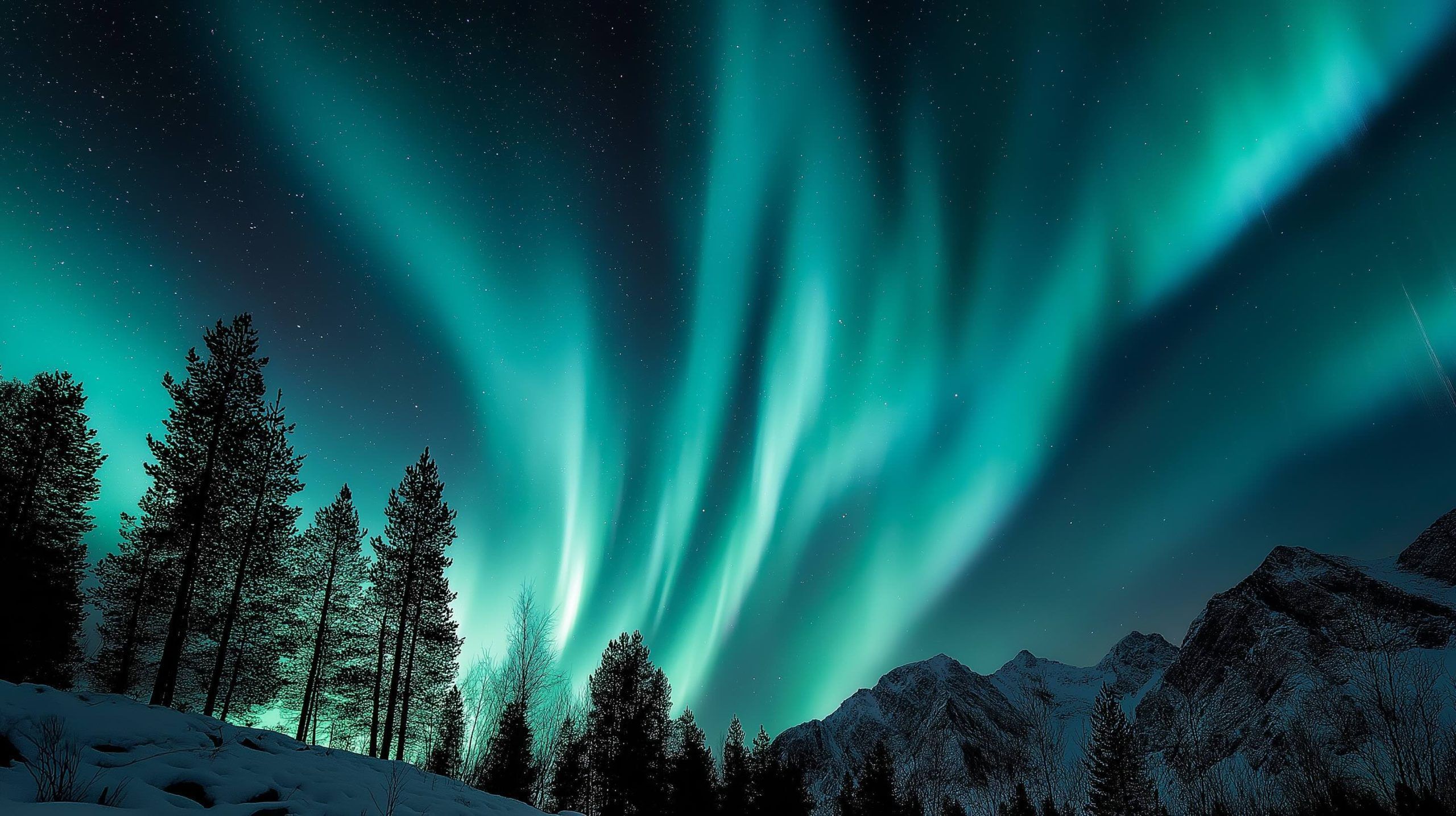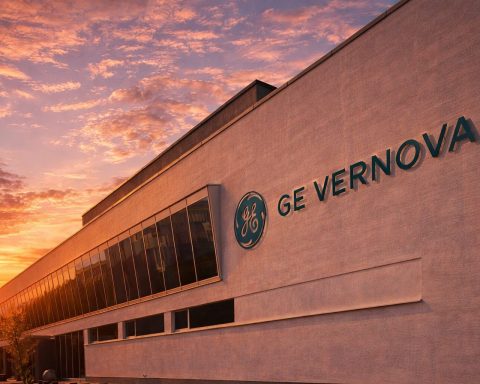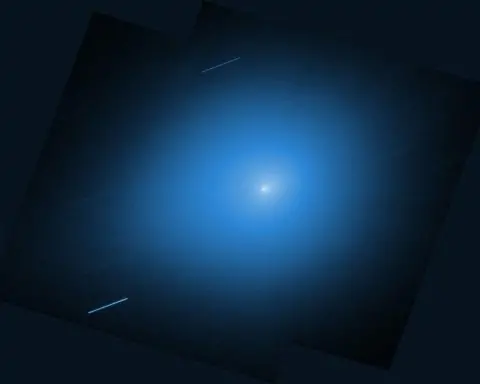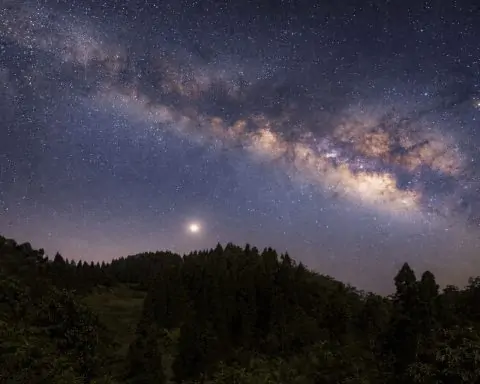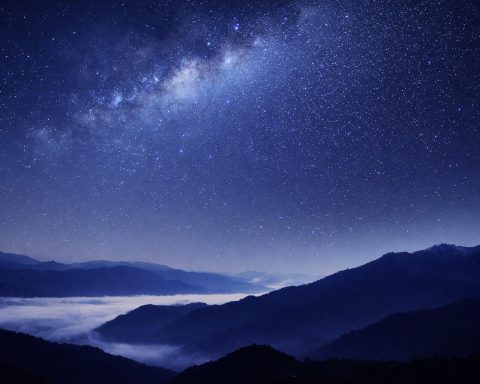Updated: Wednesday, November 12, 2025
TL;DR (What to watch tonight)
- Aurora alert: NOAA confirms G4 (Severe) geomagnetic storm levels were reached early today; strong auroras could push unusually far toward mid‑latitudes tonight if activity persists. Check the sky after dark and again around local midnight. [1]
- Meteor activity: The Northern Taurids are at/near their broad peak Nov 11–12—not many per hour, but famous for slow, bright fireballs. Best between dusk and midnight before the Moon climbs higher. [2]
- Planets at a glance:Mercury and Mars sit very low together in the southwest right after sunset (fleeting view). Saturn is well‑placed through the evening; Jupiter brightens late and dominates the late‑night/early‑morning sky. [3]
- Moon: It’s Last/Third Quarter today (05:28 UTC), so the Moon rises late and leaves the early evening skies darker—great for meteors and deep‑sky objects. [4]
Breaking: Severe geomagnetic storm could supercharge tonight’s auroras
The U.S. Space Weather Prediction Center reports G4 (Severe) geomagnetic storm levels were reached at 01:20 UTC on Nov. 12, with storming expected to continue into the night. In practical terms, that greatly boosts the odds of seeing the northern lights unusually far south (or the southern lights farther north in Australia/New Zealand) when local skies are dark and clear. Keep watch after dusk, around local midnight, and toward dawn; auroras can surge in waves. [5]
NOAA also issued geomagnetic storm watches for Nov. 11–13 (ranging from G2 to G4), tied to multiple Earth‑directed coronal mass ejections earlier this week. For real‑time now‑casting, use NOAA’s aurora dashboards and 3‑day forecast pages before you head out. [6]
How to look: Face north in the Northern Hemisphere (south in the Southern Hemisphere). A faint gray or red arc near the horizon can intensify quickly—long‑exposure smartphone shots often reveal color first.
Meteor watch: Northern Taurids near their 2025 peak
The Northern Taurids—a long‑lasting shower from Comet Encke—are active Oct 20–Dec 10 and peak around Nov 11–12. Rates are modest (often a handful per hour), but Taurids are loved for their occasional bright, slow “fireballs.” Tonight, the Last‑Quarter Moon rises late, so your best window is the early evening to midnight with darker skies before moonlight picks up. Face east to south and scan wide; meteors can streak anywhere. [7]
Royal Observatory Greenwich also lists Nov. 12 as the Northern Taurids’ peak date for the UK, reinforcing that tonight is still prime time to try for a fireball catch. [8]
Pro tip: Get comfortable, avoid phone screens, and give your eyes 20–30 minutes to adapt. A reclining chair and a blanket will multiply your “meteors seen per hour.”
Looking ahead: The Leonids peak Nov 16–17 under a slim crescent moon—excellent conditions. If clouds spoil tonight, plan a pre‑dawn Leonids session later this week. [9]
Planet spotlight: a fleeting Mercury–Mars pairing at sunset
Right after sunset tonight, look very low in the southwest: Mercury sits about 5° above the horizon with Mars ~1° to its upper right—a tight, photogenic pairing. You’ll need a perfectly clear, flat horizon and to wait until the Sun is fully below the horizon before using binoculars. The planets set less than an hour after sunset, so time is tight. [10]
Across the rest of the evening, Saturn glows steady and golden in the south/southwest, a reliable target for small telescopes. Meanwhile, Jupiter is the month’s show‑stopper, rising by late evening and shining brilliantly high before dawn; it’s moving among the stars of Gemini this month. [11]
Moon & light conditions: darker evenings, brighter after midnight
Today’s Last/Third Quarter Moon (05:28 UTC) means the Moon rises around midnight and is highest before dawn, leaving early evening hours darker—ideal for Taurids, faint star clusters, and galaxies. (Exact moonrise varies by location.) [12]
If you’re out late, the half‑moon can be a great binocular target. The ragged sunrise line—the terminator—throws crater rims and mountain shadows into sharp relief.
Deep‑sky and easy binocular targets for tonight
- Pleiades (M45): The Seven Sisters glitter high in the east by mid‑evening. Even from suburbs, a simple pair of binoculars resolves dozens of stars. (RMG’s November guide has more seasonal highlights if you’re just getting started.) [13]
- Andromeda Galaxy (M31): Use the “W” of Cassiopeia to hop to Andromeda under darker skies—one of the best beginner galaxy targets. [14]
- Saturn’s rings: Any small telescope (60–80 mm) will show the planet’s oval shape and, in steady air, a hint of the ring system. Saturn remains well placed this month. [15]
When to look (local time guidance)
- Auroras: After astronomical twilight and again near local midnight; keep checking—auroras pulse in bursts during storms. [16]
- Taurids:Dusk–midnight (before moonrise brightens the sky). [17]
- Mercury–Mars:Immediately after sunset, very low SW for ~30–45 minutes. [18]
- Saturn:Dusk to late evening in the south/southwest. Jupiter:late evening through dawn. [19]
Safety & gear tips
- Aurora & planets near sunset: Never aim optics near the Sun. Wait until it’s well below the horizon before using binoculars/telescopes. [20]
- Photographing aurora/meteors: Wide lens, 5–15 s exposures, ISO 1600–3200 (start here and adjust). A tripod and remote/phone timer reduce blur.
- Beat the cold: Dress in layers, bring a thermos, and use red‑light mode on your phone to preserve night vision.
- Find dark skies: A short drive from urban lights can multiply what you see. (NOAA’s space‑weather pages help time aurora surges.) [21]
Why tonight is special
- Space weather is the wildcard. Multiple CMEs have been en route; NOAA’s G4 note this morning means tonight could deliver bucket‑list auroras well beyond the usual auroral zones, weather permitting. [22]
- Fireball season continues. With the Northern Taurids still active—and the Moon out of the way early in the evening—this is one of the year’s best nights to try for those slow, dramatic meteors. [23]
- A tidy planetary pairing. The Mercury–Mars meetup is brief but rewarding if you have a clear southwest view just after sunset. [24]
Dates to pencil in next
- Leonids peak:Night of Nov 16–17 (dark skies; ~10–15/hour in ideal conditions). Try again the morning of Nov 18 if clouds intervene. [25]
- Uranus at opposition:Nov 21—visible all night in Taurus; binoculars help pick it out. [26]
Sources & further reading
- NOAA Space Weather Prediction Center: G4 (Severe) storm levels reached; geomagnetic watches for Nov 11–13; and the 3‑day outlook for near‑real‑time updates. [27]
- American Meteor Society: Northern Taurids activity window and peak; shower characteristics. [28]
- Royal Observatory Greenwich: November 2025 highlights and Last Quarter time (05:28 UTC). [29]
- Space.com: Mercury–Mars pairing details for Nov. 12 (altitude and separation). [30]
- EarthSky: Visible planets and night sky guide (Saturn and Jupiter placement; November sky tips). [31]
Clear skies! If you publish local versions of this guide, add city‑specific sunset/moonrise times and an aurora link for your readers so they can time their outings precisely.
References
1. www.swpc.noaa.gov, 2. www.amsmeteors.org, 3. www.space.com, 4. www.rmg.co.uk, 5. www.swpc.noaa.gov, 6. www.swpc.noaa.gov, 7. www.amsmeteors.org, 8. www.rmg.co.uk, 9. www.amsmeteors.org, 10. www.space.com, 11. earthsky.org, 12. www.rmg.co.uk, 13. www.rmg.co.uk, 14. earthsky.org, 15. earthsky.org, 16. www.swpc.noaa.gov, 17. www.amsmeteors.org, 18. www.space.com, 19. earthsky.org, 20. www.space.com, 21. www.swpc.noaa.gov, 22. www.swpc.noaa.gov, 23. www.amsmeteors.org, 24. www.space.com, 25. www.amsmeteors.org, 26. earthsky.org, 27. www.swpc.noaa.gov, 28. www.amsmeteors.org, 29. www.rmg.co.uk, 30. www.space.com, 31. earthsky.org
